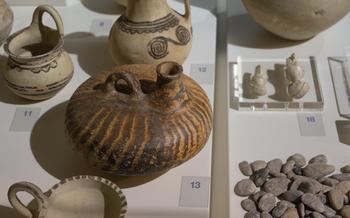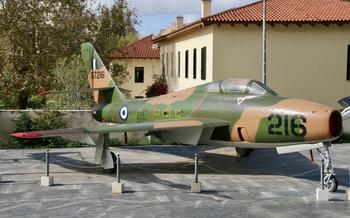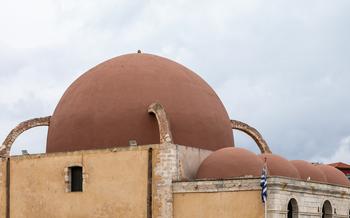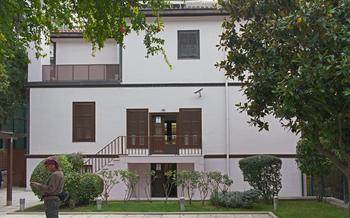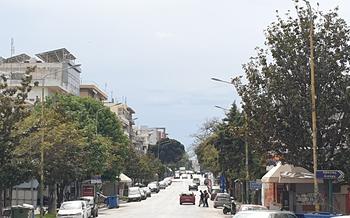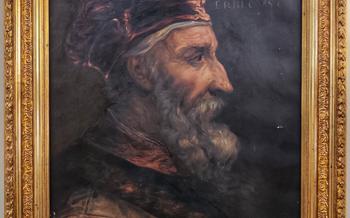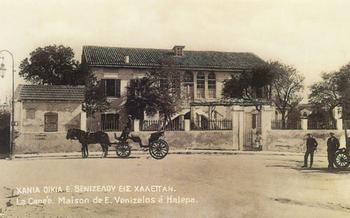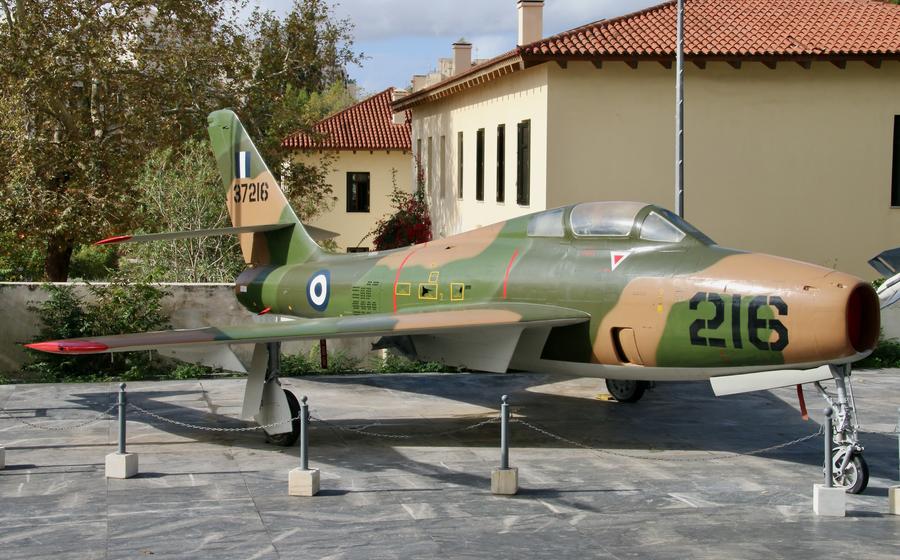
War Museum of Athens
- A Journey Through History
- Location and Accessibility
- Hours of Operation and Admission Fees:
- Exploring the Museum's Galleries
- Ancient Warfare and the Hellenic Legacy
- Byzantine Era and the Rise of Constantinople
- The Ottoman Occupation and the Greek War of Independence:
- The Balkan Wars and World War I
- World War II and the Occupation of Greece
- The Cold War and Modern Conflicts
- Interactive Exhibits and Multimedia Displays:
- Temporary Exhibitions and Special Events
- Educational Programs and Resources:
- Museum Shop and Souvenirs:
A Journey Through History
The War Museum of Athens stands as a testament to the rich military heritage of Greece, a nation that has played a pivotal role in shaping the course of history. Within its walls, visitors embark on a chronological journey through the annals of Greek military prowess, from the ancient era of hoplite phalanxes to the modern-day conflicts that have shaped the nation. The museum's vast collection of artifacts, weaponry, and exhibits offers a comprehensive narrative of Greece's military past, providing insights into the strategies, tactics, and sacrifices that have forged the nation's identity.
Location and Accessibility
The War Museum of Athens is conveniently located in the heart of the city, at 2 Rizari Street, close to the National Archaeological Museum and the Syntagma Square metro station. Visitors can easily reach the museum by taking the metro's red line and exiting at Syntagma station. The museum is well-marked with signage, making it easy to locate on foot. If driving, there are limited parking spaces available on the streets surrounding the museum, but it's advisable to use public transportation or taxis to avoid any parking hassles.
Hours of Operation and Admission Fees:
The War Museum of Athens is open to the public from Tuesday to Sunday, with varying hours depending on the season. During the summer months (April 1st to October 31st), the museum is open from 9 am to 7 pm, while in the winter months (November 1st to March 31st), it operates from 9 am to 5 pm. The museum remains closed on Mondays and on certain public holidays.
Admission fees are set at €5 for adults, €3 for students and seniors, and free of charge for children under 6 years old. Visitors can also purchase a discounted family ticket for €12, which admits two adults and two children. Guided tours are available upon request and come with an additional charge.
To avoid the crowds and ensure a more fulfilling experience, it is advisable to visit the museum during the weekdays or in the early mornings. The museum's website provides up-to-date information on operating hours, admission fees, and any special events or closures.
Exploring the Museum's Galleries
The War Museum of Athens is a treasure trove of historical artifacts, weaponry, and exhibits that take visitors on a chronological journey through Greek military history. The galleries are arranged in a logical sequence, allowing visitors to trace the evolution of warfare from ancient times to the present day.
Ancient Warfare Gallery
The first gallery focuses on ancient warfare and the Hellenic legacy. Here, visitors will find fascinating displays showcasing ancient Greek weaponry, armor, and battle tactics. The significance of the hoplite phalanx formation and its impact on ancient warfare are explored in detail. The gallery also highlights the role of prominent military leaders like Leonidas and Alexander the Great in shaping Greece's military prowess.
Byzantine Gallery
The next gallery delves into the Byzantine era and the rise of Constantinople. Visitors will discover how warfare evolved during this period, with an emphasis on the strategic importance of Constantinople. The gallery showcases the unique military challenges faced by the Byzantines, including threats from various empires and nomadic tribes. The development of new technologies and tactics, such as the use of Greek fire and fortified city walls, is also discussed.
Ottoman-Greek War Gallery
The third gallery focuses on the Ottoman occupation and the Greek War of Independence. Visitors will learn about the impact of the Ottoman conquest on Greek military history and the struggle for independence. Key events and battles of the Greek War of Independence are explored, highlighting the role of prominent leaders like Theodoros Kolokotronis and Andreas Miaoulis. Exhibits related to the Greek navy and its heroic naval victories during the war are also showcased.
Balkan Wars and World War I Gallery
The fourth gallery covers Greece's involvement in the Balkan Wars and World War I. Visitors will discover the country's territorial gains as a result of the Balkan Wars and its contributions to the Allied forces in World War I. Exhibits related to the Salonika Front and the role of Greek troops in defending against the Central Powers are showcased. Notable Greek military figures and events from this period are also highlighted.
Ancient Warfare and the Hellenic Legacy
The War Museum of Athens takes visitors on a journey through the military prowess of ancient Greece, showcasing an array of fascinating exhibits that bring to life the strategies and tactics that shaped ancient warfare. Explore the evolution of weaponry, from the iconic hoplite armor and bronze swords to the sophisticated siege machines that revolutionized combat. Learn about the significance of the hoplite phalanx formation, a disciplined and formidable unit that played a crucial role in Greek victories. Discover the stories of legendary military leaders like Leonidas, whose heroic stand at Thermopylae against the Persian army epitomizes the indomitable spirit of the ancient Greeks. Gaze upon the intricate battle scenes depicted on ancient pottery and sculptures, offering a glimpse into the fierce clashes that shaped the course of history. Don't miss the interactive exhibits that allow visitors to experience the thrill of ancient combat through simulated battles and virtual reality simulations, providing a truly immersive journey into the world of ancient Greek warfare.
Byzantine Era and the Rise of Constantinople
During the Byzantine Empire, the art of war underwent significant transformations as the empire faced threats from various empires and nomadic tribes. The strategic importance of Constantinople, the empire's capital, demanded a robust military defense system. The Byzantines developed new technologies and tactics, such as the devastating Greek fire and the construction of fortified city walls, to protect their vast territories. The Varangian Guard, an elite unit of foreign mercenaries, played a crucial role in defending the empire's borders and maintaining internal security. Explore the fascinating exhibits in this gallery to discover the military prowess and resilience of the Byzantine Empire, a civilization that left an enduring legacy on the world stage.
The Ottoman Occupation and the Greek War of Independence:
The War Museum of Athens vividly portrays the profound impact of the Ottoman conquest on Greek military history and the subsequent struggle for independence. Exhibits showcase the key events and battles that shaped this era, highlighting the heroic efforts of prominent leaders such as Theodoros Kolokotronis and Andreas Miaoulis. Visitors can explore displays related to the Greek navy and its remarkable naval victories during the war, gaining insights into the strategic importance of sea power in this conflict. Personal accounts and artifacts offer a glimpse into the experiences of Greek soldiers and civilians, shedding light on their sacrifices and resilience during this tumultuous period.
The Balkan Wars and World War I
Greece played a significant role in the Balkan Wars, which took place between 1912 and 19The country's involvement in these conflicts resulted in significant territorial gains, including the annexation of Crete, Epirus, and Macedonia. The War Museum of Athens showcases exhibits related to these wars, highlighting the bravery and sacrifices of Greek soldiers during this period.
During World War I, Greece initially remained neutral but eventually joined the Allied forces in 191The museum features exhibits showcasing Greece's contributions to the war effort, including its participation in the Salonika Front and the defense against the Central Powers. Visitors can learn about the role of Greek troops in key battles, such as the Battle of Skra-di-Legen, and the impact of the war on the country's military and society.
World War II and the Occupation of Greece
The War Museum of Athens offers a comprehensive exploration of the devastating impact of World War II on Greece, a period marked by Axis occupation and the heroic resistance movement. Exhibits showcase the resilience and determination of the Greek people as they fought against the occupying forces. Visitors can learn about key resistance groups, such as the National Liberation Front (EAM) and the National Republican Greek League (EDES), and their daring operations against the Axis powers. The museum also sheds light on the Battle of Crete, a significant turning point in the war, where Greek forces valiantly defended the island against German paratroopers. The role of the Greek merchant navy in defying the Axis blockade and supplying the Allied forces is also highlighted. Finally, the liberation of Greece in 1944 and the aftermath of the war are explored, showcasing the country's journey towards rebuilding and recovery. Personal accounts and stories of Greek resistance fighters offer a poignant glimpse into the sacrifices and struggles of this turbulent period.
The Cold War and Modern Conflicts
Greece's strategic location and membership in NATO during the Cold War made it a key player in the global geopolitical landscape. The War Museum of Athens showcases exhibits that delve into this era, highlighting Greece's involvement in various peacekeeping missions and international conflicts. Visitors can explore displays related to the Korean War, where Greek forces fought alongside the United Nations, and the Cyprus conflict, where Greece played a significant role in defending the island's independence. The museum also features exhibits on modern military technology and equipment used by the Greek armed forces, providing insights into the country's defense capabilities and its contributions to international security.
Interactive Exhibits and Multimedia Displays:
The War Museum of Athens takes visitors on a journey through time not only through its artifacts but also through its innovative use of technology. Interactive exhibits, multimedia presentations, and touchscreens bring history to life, allowing visitors to engage with the content in a dynamic and immersive way. Virtual reality experiences transport visitors to the battlefields of ancient Greece or the trenches of World War I, while simulated battle scenarios let them experience the thrill of combat firsthand. Audio guides and mobile apps provide additional information and insights into the exhibits, enriching the visitor experience and making it accessible to people of all ages and backgrounds. These interactive elements transform the museum into a vibrant and engaging learning environment, ensuring that visitors leave with a deeper understanding of Greek military history.
Temporary Exhibitions and Special Events
Beyond its permanent collection, the War Museum of Athens hosts a dynamic program of temporary exhibitions that delve into specific themes or historical periods in greater detail. These exhibitions offer visitors a fresh perspective on Greek military history and showcase unique artifacts, documents, and multimedia presentations. Check the museum's website or inquire at the information desk for details on upcoming or ongoing temporary exhibitions that may align with your interests.
In addition, the museum organizes special events, lectures, and workshops throughout the year, providing visitors with opportunities to engage with experts, participate in discussions, and gain deeper insights into military history. These events often feature renowned historians, military personnel, or veterans sharing their knowledge and experiences. By attending these special programs, visitors can further enrich their understanding of Greece's military heritage and its impact on the nation's identity.
Educational Programs and Resources:
Beyond its captivating exhibits, the War Museum of Athens is also dedicated to fostering a deeper understanding of Greek military history through a range of educational programs and resources. Guided tours led by knowledgeable historians provide visitors with personalized insights into the museum's collection and the broader context of Greek military history. Interactive workshops and school programs engage younger audiences, making the museum an ideal destination for families and educators alike.
In addition, the museum offers a wealth of educational resources to further enrich visitors' learning experience. A well-stocked library houses an extensive collection of books, journals, and documents related to Greek military history, accessible to researchers and enthusiasts alike. Online resources, including virtual exhibitions and educational materials, provide visitors with the opportunity to continue their exploration of Greek military history beyond the museum walls.
Through these educational initiatives, the War Museum of Athens establishes itself as a vibrant center for learning and research, committed to preserving and sharing the rich legacy of Greek military history for generations to come.
Museum Shop and Souvenirs:
The War Museum of Athens houses a well-stocked museum shop that offers a range of unique souvenirs and gift items for visitors to commemorate their visit. From traditional Greek military memorabilia to replicas of ancient armor and weaponry, the shop provides a treasure trove of items to choose from. Visitors can also find a selection of books, publications, and historical artifacts that delve deeper into the rich military history of Greece. Whether looking for a special memento or a thoughtful gift for a history enthusiast, the museum shop offers something for everyone. By supporting the museum shop, visitors not only take home a piece of Greek military history but also contribute to the museum's ongoing efforts to preserve and promote the country's military heritage.
